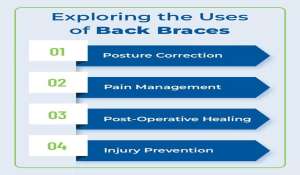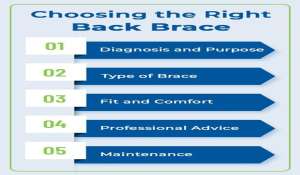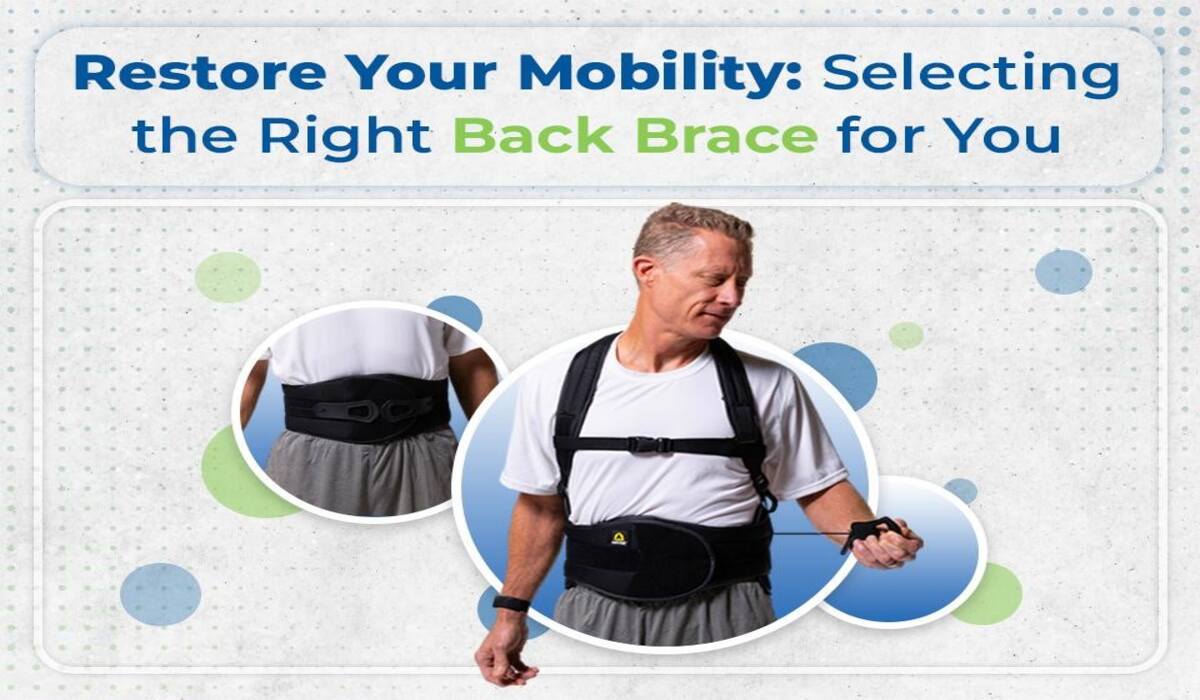Table of Contents
Mobility is a fundamental aspect of our daily life, impacting everything from work and leisure activities to our mental health and overall well-being. For individuals facing back problems or spinal conditions, mobility can be significantly affected, sometimes altering the quality of life. Thankfully, we have access to tools that can assist in managing these issues and restoring mobility, one of which is the back brace.
This article aims to guide you through the process of selecting the right back brace for your needs, a decision that could potentially transform your life by restoring your mobility and reducing discomfort.
Understanding Back Braces: An Overview
Back braces are orthotic devices—external supports used to control movement, offer stability and reduce pain. These aids have found application in a multitude of scenarios, ranging from injury recovery to posture correction and even as preventive measures against potential back issues.
The choice of a back brace is predominantly dictated by the specific needs of an individual and the nature of their condition. Generally, back braces fall into three primary categories: rigid braces, soft braces, and elastic braces.
1. Rigid Braces
Rigid braces, as the name suggests, are robust and firm, providing maximum support and a high degree of immobilization. These are typically deployed in the aftermath of severe injuries or surgical procedures, wherein it’s crucial to limit movement and offer substantial support to promote healing.
Rigid braces encompass various designs, from full torso braces to more localized lumbar braces. These braces redistribute weight from the mid and lower (thoracic and lumbar) spine to the chest and hips, relieving pressure and promoting healing.
2. Soft Braces
Soft braces, or corsets, offer a balance of support and flexibility. These devices, made from soft materials like neoprene, canvas, or elastic, are often used to manage chronic back pain, aid in posture correction. Soft braces provide compression, which can help relieve pain, reduce inflammation, and limit certain movements that could aggravate the back condition.
3. Elastic Braces
Elastic braces are the most flexible variant, offering mild to moderate support while still permitting a significant range of movement. Often employed in injury prevention or rehabilitation, these braces can assist in posture correction, provide relief from mild to moderate back pain, and support the back during physical activities that could strain it.
Elastic braces come in different designs, including belts and wraparound models. They’re generally used for mild sprains, strains, muscle weakness, or back muscle fatigue from prolonged standing or lifting.
Exploring the Uses of Back Braces

Different conditions call for different back braces. Here’s how specific back braces come into play for various conditions:
- Posture Correction: Braces designed for posture correction are typically soft or elastic braces. They provide support to the lower back and abdominal muscles, helping maintain a straight and upright position. Moreover, Regular usage, along with posture awareness and strengthening exercises, can aid in long-term posture improvement.
- Pain Management: For those living with chronic back pain, back braces can offer relief by providing support and stability to the affected areas, reducing the load on the painful structures, and limiting painful movements.
- Injury Prevention: Elastic braces are commonly used by those who engage in heavy lifting or activities that might strain the back. Additionally, They provide support to the back muscles and remind the wearer to maintain correct posture, helping to prevent injuries.
Further Considerations When Wearing a Back Brace
Once you’ve started using a back brace, there are a few additional considerations that can help improve your experience:
- Skin Care: Consistent use of a back brace can sometimes cause skin chafing or irritation. Ensure your skin is clean and dry before putting on the brace. Consider using a thin, breathable layer of clothing between your skin and the brace to reduce friction.
- Strengthening Exercises: While a back brace provides external support, it’s crucial to strengthen the muscles that support your spine. Gentle back-strengthening exercises can be beneficial, but only undertake these under the guidance of a healthcare professional.
The Psychological Impact of Wearing a Back Brace
Wearing a back brace can also have psychological implications. It can serve as a physical reminder of your condition, affecting your self-image and emotional well-being. Here are a few tips for managing these challenges:
- Social Support: Reach out to friends, family, or support groups. Connecting with others who understand your experience can provide emotional relief.
- Patience and Positivity: Adjusting to a back brace takes time and patience. Maintain a positive mindset, focusing on the progress you’re making in your recovery journey.
- Mental Health: If you’re feeling depressed or anxious, don’t hesitate to seek help from a mental health professional. Your emotional health is as important as your physical health.
Read More: Alleviate Back Discomfort with Effective Back Braces
Choosing the Right Back Brace

The decision to select a back brace should be informed and personalized based on various factors. Also, medical advice, individual health condition, lifestyle, and comfort.
1. Diagnosis and Purpose
The first step in choosing a back brace is to understand your diagnosis and the purpose of the brace. Moreover, Are you recovering from surgery? Managing chronic pain? Looking to improve your posture? Or hoping to prevent a back injury during physical activities? The answers will guide your selection.
2. Type of Brace
Once you’re clear on purpose, consider which type of brace—rigid, soft, or elastic—would best serve your needs.
3. Fit and Comfort
An effective back brace must fit well. It should be snug enough to provide support but not so tight that it causes discomfort or restricts circulation. Further, Consider factors like the brace’s material, adjustability, ease of wearing and removing. As well as, its compatibility with your daily activities and clothing.
4. Professional Advice
Your healthcare provider can guide you on the correct use of the brace, including how long you should wear it each day and any precautions you need to take while wearing it. You may also need regular check-ups to monitor your progress and make any necessary adjustments to the brace or your treatment plan.
5. Maintenance
Consider the cleaning and maintenance requirements of the brace. A brace that’s easy to clean and maintain can make a significant difference in your daily routine and overall comfort.
Conclusion
In Conclusion, Choosing the right back brace can be a game-changer in your journey toward improved spinal health and restored mobility. While it may require some trial and adjustment, finding the perfect fit can provide significant relief, support, and freedom of movement. Remember, a back brace is just one part of your comprehensive treatment plan, which should include elements like physical therapy, exercise, a balanced diet, and regular medical check-ups. With the right approach and tools, you can manage your back condition effectively, restore your mobility, and reclaim your life.
Artik Medical Supply’s back braces feature adjustable compression systems and are available for lower and mid-back support. If you’re not sure what product is right for you or if you’re eligible for insurance coverage, Artik Medical Supply will provide the guidance you need. Lastly, They can even communicate with your doctor to determine the best back brace for you. Contact them today to check for insurance coverage.


